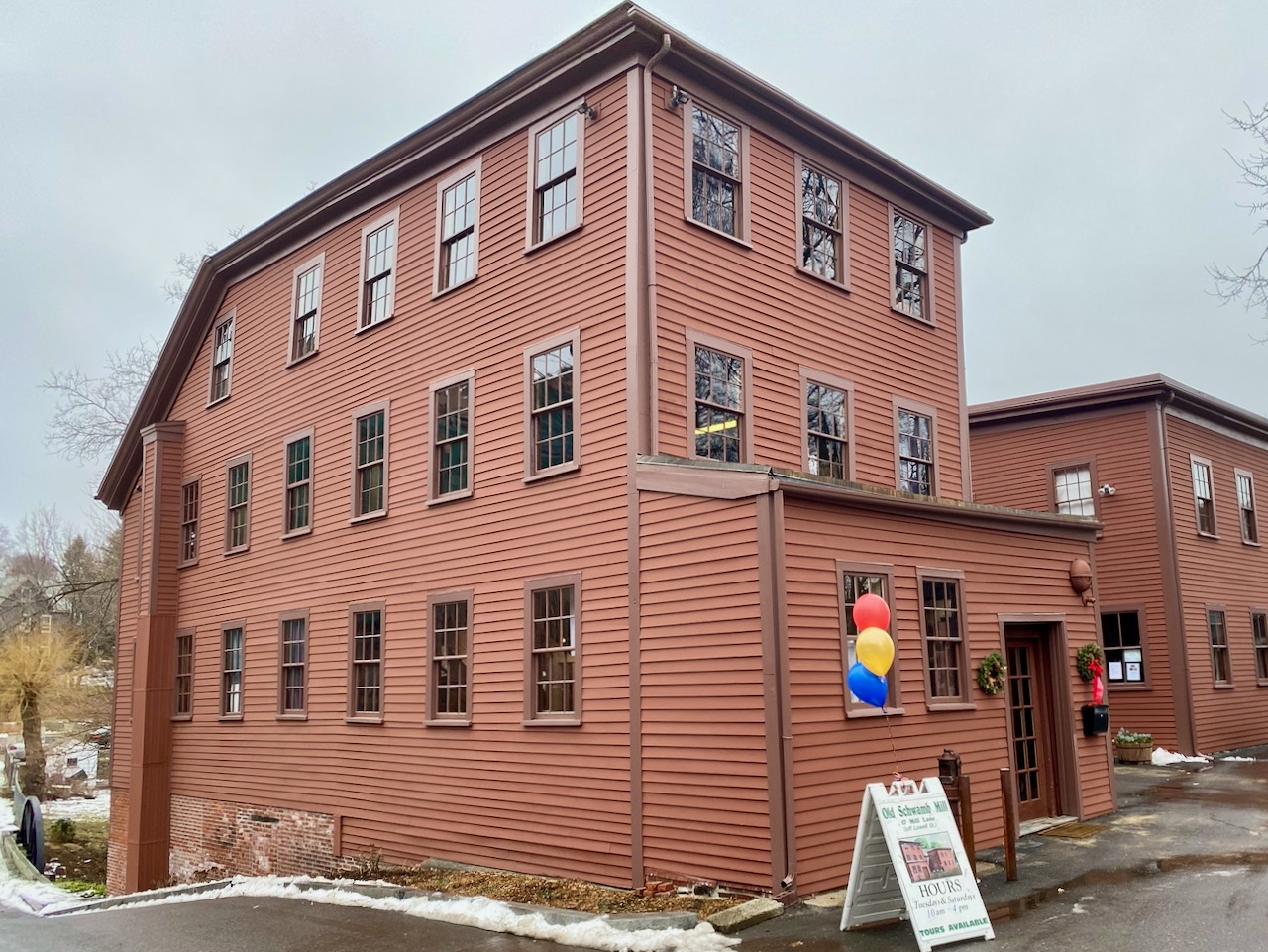Located on the oldest continuing operating mill site in America, the Old Schwamb Mill in Arlington, MA serves as a powerful example of how historic preservation and the commitment of one individual can coalesce to safeguard a community’s historical and cultural resources for future generations.
Menotomy, as Arlington was once called, was settled by European colonists in 1635 on the ancestral lands of the Massachusett Tribe. By 1637 a rudimentary mill was established on the aptly named Mill Brook, soon followed by a grist mill and sawmill on the site where the Schwamb Mill now stands. Built by David Winship, the grist mill and sawmill remained in the Winship family for multiple generations until acquired by Henry Woodbridge, a spice grinder. In 1860, The Woodbridge Spice Mill was destroyed by fire and rebuilt. Four years later it was sold to German immigrants, Charles and Frederick Schwamb.
While the mill originally manufactured piano casings and architectural woodwork, it became widely known for making oval picture frames whose popularity surged with the rise of photography following the Civil War. Among the innovations the Schwambs pioneered was the development of specialized lathes capable of producing perfect ovals of all sizes in large quantities and a kiln to dry the wood. Between 50 and 75 employees provided the skilled workmanship necessary to craft the frames which were contoured by a hand chisel on a double-axis lathe. The tools used in these processes can be seen at the Schwamb Mill today including the kiln, the only surviving dry kiln in New England.
Despite the sophisticated nature of the fabrication process used to create the frames, the mill was originally powered by a large 18 foot in diameter waterwheel, partially recessed under the basement floor with an “overshot” wheel channeling the water over the top. In 1888 the mill installed a water turbine, a second-generation water-power technology. Used until 1904, the turbine is featured today in a popular behind-the-scenes tour of the mill’s basement.
Charles Schwamb and his descendants operated the mill for more than a hundred years. In 1969, his great grandson, Elmer, retired and sold the property to a lumber company. A purchase and sale agreement was executed and plans to destroy the remaining mill buildings revealed to the public. Outraged at the prospect, the first grass roots case of industrial historic preservation in the United States was born, led by community activist Patricia C. Fitzmaurice.
The Schwamb Mill Preservation Trust Inc., a nonprofit charitable educational trust, formed “to raise funds to preserve the Mill buildings, to maintain the production of oval frames, and to exhibit the Mill’s collections and traditions.” On January 16, 1970, the Trust purchased the Old Schwamb Mill, securing its future. The following year, on October 7 , the Old Schwamb Mill was added to the National Register of Historic Places.
Preserved for future generations, the Old Schwamb Mill is an integral part of Arlington’s historical and cultural fabric offering educational tours and events. A recent exhibition, The Road Where It Happened: Revolution Comes to Menotomy, mounted in recognition of the 250th anniversary of the start of the American Revolution, re-examines the history of the site and the role that the people and landscape of Menotomy played in the founding of America.
The Old Schwamb Mill continues to manufacture high quality wooden oval frames for customers from throughout the world. Frames and mouldings can be found in major art museums including in the collections of the United States White House, Buckingham Palace, the Iolani Palace in Honolulu, and the collection of Queen Sylvia of Sweden.
Sources: Old Schwamb Mill, Clio

